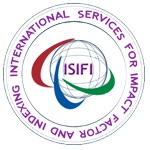Early Stage Cervical Cancer: Survivorship and Fertility preservation
Pdf : 18 Views Download
Citation: Hanan Elzeblawy Hassan, â€Early Stage Cervical Cancer: Survivorship and Fertility preservationâ€. American Research Journal of Oncology, vol 2, no. 1, 2020, pp. 1-3.
Copyright Hanan Elzeblawy Hassan. This is an open access article distributed under the Creative Commons Attribution License, which permits unrestricted use, distribution, and reproduction in any medium, provided the original work is properly cited.
Abstract:
Cancer is a main leading cause of death among females in economically developing countries.Description:
INTRODUCTION
Cancer is a main leading cause of death among females in economically developing countries. Cervical cancer is the third most common cancer in the world, with 2.3 million prevalent cases and 510 000 incident cases each year. Annually, 288 000 women die of cervical cancer and 80% of these deaths occur in low-resource countries [1-3]. Cervical cancer is a treatable condition, and there is a good chance of cure if it is found and treated in the early or precancerous stages [4-6]. Many women with cervical cancer are in their reproductive years.
Advice regarding options for fertility preservation for women with early stage cervical cancer is available from physician who are experts in reproductive endocrinology and infertility, in conjunction with a gynecologic oncologist [7-10]. The objective is early detection and management of cervical cancer to preserve the fertility in reproductive woman. Options for treatment of early stage cervical cancer include cone biopsy, hysterectomy, and radiation and chemotherapy. Future pregnancies are not possible after hysterectomy or radiation therapy. Some women with early stage cervical cancer with no spread to other organs or lymph nodes who wish to carry a pregnancy after cervical cancer treatment are eligible for less aggressive forms of treatment [7, 9].
Treatments that allow a woman to carry a pregnancy at a later time include the following:
1. Cervical Conization: is defined as excision of a cone-shaped or cylindrical wedge from the cervix uteri that includes the transformation zone and all or a portion of the endocervical canal. It is used for the definitive diagnosis of squamous or glandular intraepithelial lesions, for excluding microinvasive carcinomas, and for conservative treatment of cervical intraepithelial neoplasia (CIN) [11].
2. Radical trachelectomy: removal of the cervix and surrounding tissues, but not the uterus, along with to the removal of the lymph nodes in the pelvis. Trachelectomy may be done through an incision in the vagina or abdomen, depending upon the surgeon’s preference. The cervix and upper portion of the vagina may be completely or partially removed, depending upon the size and depth of the cancer. A permanent purse-string (cerclage) is placed at the lower end of the uterus or remaining cervix [12].
3. Lymphadenectomy: is surgical removal of lymph nodes within the pelvis is performed to be sure that the cancer has not spread;before trachelectomy begins. The nodes may be removed through an incision in the abdomen (if an abdominal incision is made for the trachelectomy), which allows the physician to see the nodes directly. Alternately, the nodes are removed with the assistance of a laparoscope if the trachelectomy is done vaginally. If any nodes are found to contain cancer cells, trachelectomy is not performed, and more aggressive therapy (radical hysterectomy or chemoradiotherapy) is usually recommended.
Post Procedure Education
• The woman should avoid sexual intercourse, not place anything in the vagina, or take a bath or swim for four to six
weeks (showers are fine)
• Some bleeding is expected for approximately one week, although it should not be heavy.
• If bleeding becomes heavy (eg, soaks a pad in less than an hour) or continues for more than one week, the woman should contact her healthcare provider.
• Follow up examinations and testing is recommended to ensure that there is no evidence of cervical cancer.
Pregnancy after Cervical Cancer Treatment
Most women are advised to wait six to 12 months after conization or trachelectomy before attempting to become pregnant to allow the tissue to heal fully.
Infertility: There is an increased risk of difficulty in becoming pregnant if the cervix or lower uterus becomes scarred or narrowed as a result of the conization or radical trachelectomy.
This could potentially prevent sperm from entering the uterus. This can usually be overcome with an infertility treatment, such as intrauterine insemination (IUI), following attempts at dilating the cervical opening. With IUI, a small catheter is used to deliver sperm directly into the uterus [13-15].
Cervical insufficiency: Cervical insufficiency (cervical incompetence) is defined by the American College of Obstetricians and Gynecologists (ACOG) as the inability of the uterine cervix to retain a pregnancy in the second trimester, in the absence of uterine contractions. It occurs when the cervix
opens or thins earlier than normal during pregnancy. This can lead to miscarriage or preterm delivery (when delivery occurs before 37 weeks of pregnancy). Women who have had cervical conization or radical trachelectomy may be at an increased risk of cervical insufficiency. For these reasons, women who undergo treatment for cervical cancer are followed closely during pregnancy. This generally involves regular monitoring of the length and opening (dilation) of the cervix [16].
References
1. Qalawa, Sh., Eldeeb, A., & Hassan, H. Young Adult Women’s intention regarding breast and cervical cancer screening in Beni-Suef. Scientific Research Journal, 2015; 3(3): 11-24.
2. Hassan, H., Bayoumi, M., & Atwa, A. Emotional Distress Associated with Gynecologic and Breast Cancer in Beni-Suef City. International Journal of Science and Research, 2016; 5(2): 1118-1129.
3. Nady F., Said M., Youness E., Hassan H. Impact of Tailored Educational Program of Quality of Life Improvement on Women Undergoing Breast Cancer Treatment at El-Minia Region, Egypt. American Research Journal of Gynaecology. 2017; 1(1): 1-17. doi:10.21694/2577-5928.17001
4. Nady F., El-Sherbiny M., Youness E., Hassan H. Effectiveness of Quality of Life Planned Teaching Program on Women Undergoing Gynecologic Cancer Treatment. American Research Journal of Oncology. 2018; 1(1): 1-17.
5. Mohammed F., Shahin M., Youness E., Hassan H. Survivorship in Women Undergoing Gynecological and Breast Cancer Treatment in Upper Egypt: The Impact of Quality of Life Improvement Educational Programâ€. American Research Journal of Gynaecology. 2018; 2(1): 1-28. doi:10.21694/2577-5928.18001
6. Said S., Hassan H., Sarhan A. Effect of an Educational Intervention on Women’s Knowledge and Attitude Regarding Cervical Cancer. American Journal of Nursing Research. 2018; 6(2): 59-66. doi: 10.12691/ajnr-6-2-4.
7. Nady F., Said M., Youness E., Hassan H. Effect of Nursing Intervention Program on Quality of Life Improvement for Women Undergoing Gynecological and Breast Cancer Treatment. Assuit Scientific Nursing Journal, 2018; 6(15): 62-77.
8. Atwa A., Hassan H., Ahmed S. The impact of a hospital-based awareness program on the knowledge of patients about breast cancer and cancer cervix. International Journal of Studies in Nursing. 2019; 4(1): 20-29. doi:10.20849/ijsn.v4i1.537.
9. Mohamed A., Hassan H., Gamel W., Arafa A. Awareness about breast and cervical cancers among nursing students in Beni-Suef University. Journal of Nursing Education and Practice, 2019; 9(5): 44-51. doi.org/10.5430/ jnep.v9n5p44
10. Zagloul M., Naser E., Hassan H. Impact of an Educational Training Program about Cervical Cancer on Knowledge, Attitude and Practices among Female Workers at Port Said University. International Journal of Studies in Nursing, 2020; 5(2)
11. Cong Q., Song Y., Wang Q., et al., A Large Retrospective Study of 12714 Cases of LEEP Conization Focusing on Cervical Cancer That Colposcopy- Directed Biopsy Failed to Detect. BioMed Research International, 2018; (6):1-6: DOI: 10.1155/2018/5138232.
12. Gizzo S., Emanuele Ancona E., C Saccardi C.,et al., Radical trachelectomy: The first step of fertility preservation in young women with cervical cancer
(Review), Ncol Rep; 2013; 30(6): 2545–2554. doi: 10.3892/or.2013.2736
13. Hassan H., Hassan S., Baraka M. A Survey of Relationship between Duration of Infertility and Depression among Infertile Women in Beni Suef Governorate. International Journal of Science and Research, 2015; 4(10): 1170-1177
14. Hassan H. Infertility profile, psychological ramifications and reproductive tract infection among infertile women, in northern Upper Egypt. Journal
of Nursing Education and Practice. 2016; 6(4): 92-108. https://doi.org/10.5430/jnep.v6n4p92.
15. Gamel W., Hassan H., El-ezazy A. Male Infertility and Psychological Repercussions: Α Neglected Problem in Northern Upper Egypt. International Journal of Studies in Nursing, 2019; 4(4): 1-26. doi:10.20849/ijsn.v4i4.654.
16. Cerclage for management of cervical insufficiency. Obestet. Gyneco, 2014; 123(2pt1):372-379



















